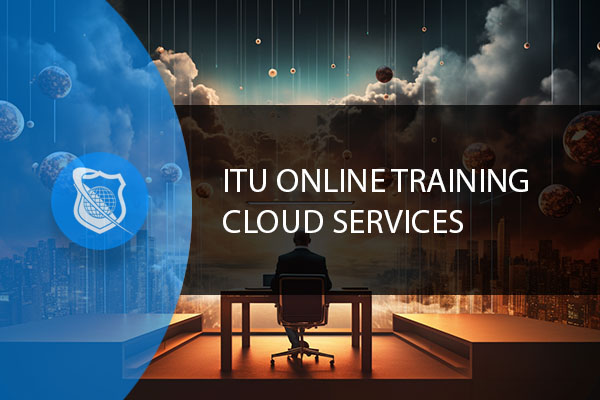What is Binary?
Definition: BinaryBinary is a number system that uses only two symbols, typically 0 and 1. It is the foundational language of computers and digital systems, representing and processing data efficiently.Understanding

In the fast-paced world of technology, the cloud has become the new frontier for businesses seeking to streamline operations, enhance accessibility, and scale resources. Azure Cloud Services, a cornerstone of Microsoft’s cloud platform, offers a robust and comprehensive set of solutions for businesses ready to make the leap from on-premises systems. With its seamless integration capabilities with existing Microsoft software and a wide array of services, Azure stands out as a top choice for organizations of all sizes. This blog aims to be your comprehensive guide for migrating from an on-premises environment to Azure, detailing the steps, best practices, and considerations you’ll need to keep in mind.
Azure Cloud Services was initially launched to serve as a complement to Windows cloud computing infrastructure. However, it has since undergone significant transformations, evolving into a versatile cloud platform that caters to a diverse range of needs. Today, Azure supports a multitude of programming languages, frameworks, and even different operating systems. This adaptability makes it a strong contender in the cloud services arena, capable of serving the complex and varied cloud infrastructure needs of modern businesses.

At ITU, we offer an exclusive Cloud Computing training series designed to prepare you for certification and/or to help you gain knowlege of all Cloud based platforms including AWS, Azure and Gooogle Cloud.
Get access to this exclusive Cloud Computing Training today.
One question that often arises when considering a move to the cloud is, “Is Azure cloud-based?” This question may stem from confusion or misconceptions about what cloud computing really entails. To set the record straight, Azure is indeed a cloud-based service. It offers a scalable and secure cloud infrastructure, capable of hosting everything from simple web apps to complex machine learning algorithms. So, if you’re considering a move to the cloud, Azure offers both the flexibility and the robustness to meet your needs.
When it comes to cloud migration, the advantages are manifold, especially with a trusted platform like Azure Cloud Services. One of the most immediate benefits is cost-efficiency. Traditional on-premises systems often require hefty investments in hardware and manpower. Azure, on the other hand, operates on a pay-as-you-go model, allowing businesses to only pay for the services they use.
Scalability is another significant advantage. Azure’s cloud infrastructure is designed to grow with your business, meaning you can easily add or remove resources without the need for major overhauls. This is particularly beneficial for businesses with fluctuating needs, as it allows for quick adjustments without incurring additional costs.
Security is a top concern for any business, and Azure takes this seriously. With its robust security measures, including advanced threat detection and data encryption, Azure provides a secure environment for your data and applications. This makes it an attractive option for businesses that handle sensitive or regulated information.
| Feature | On-Premises | Azure Cloud Services |
|---|---|---|
| Initial Cost | High | Low |
| Scalability | Limited | High |
| Security | Varies | Robust |
| Maintenance | Manual | Automated |
| Data Analytics | Limited | Advanced |
| Resource Allocation | Fixed | Flexible |
In summary, migrating to Azure Cloud Services offers a host of advantages that can help modernize and streamline business operations. From cost savings and scalability to robust security features, Azure provides a comprehensive solution for businesses ready to make the move to the cloud.

At ITU, we offer an exclusive Cloud Computing training series designed to prepare you for certification and/or to help you gain knowlege of all Cloud based platforms including AWS, Azure and Gooogle Cloud.
Get access to this exclusive Cloud Computing Training today.
Before you can embark on the journey to Azure Cloud Services, it’s essential to prepare adequately. This preparation phase is crucial for a smooth transition and successful migration. Below are some key steps to consider.
Before you can migrate to Azure, it’s important to take stock of your existing Windows cloud computing infrastructure. This involves a comprehensive review of your current systems, databases, applications, and even network configurations. You’ll need to identify which elements are already cloud-compatible and which may require modifications or updates before the move.
Understanding your current setup will also help you estimate the costs and time involved in the migration. This is the stage where you can identify potential challenges, such as data transfer bottlenecks or compatibility issues, that might arise during the migration. By conducting a thorough assessment, you can develop a more accurate and effective migration strategy, ensuring that you leverage the full capabilities of Azure’s cloud infrastructure.
Azure is not a one-size-fits-all solution; it offers a plethora of services designed to meet a wide range of business needs. As part of the Microsoft cloud platform, Azure provides various services, from data analytics and machine learning to straightforward data storage solutions.
If your business relies heavily on data analytics, Azure offers powerful tools for data visualization and business intelligence. For those looking to incorporate artificial intelligence into their operations, Azure’s AI capabilities are second to none. And if you’re simply looking for a reliable, secure place to store your data, Azure’s data storage solutions are both robust and cost-effective.
It’s essential to choose the services that align with your business objectives and operational needs. This might involve consulting with various stakeholders in your organization, from IT professionals to business analysts, to ensure that you select the most appropriate Azure Cloud Services.
By taking the time to assess your current infrastructure and carefully choosing the right Azure services, you set the stage for a successful migration. This preparation ensures that you not only make the most out of your move to Azure but also fully leverage the capabilities of the Microsoft cloud system to achieve your business goals.
The migration process to Azure Cloud Services is a multi-step journey that requires meticulous planning, execution, and post-migration optimization. Each phase has its own set of tasks and considerations, and skipping any of them could result in an incomplete or inefficient migration. Below is a detailed guide to help you navigate through each step.

At ITU, we offer an exclusive Cloud Computing training series designed to prepare you for certification and/or to help you gain knowlege of all Cloud based platforms including AWS, Azure and Gooogle Cloud.
Get access to this exclusive Cloud Computing Training today.
| Phase | Tasks | Tools/Resources |
|---|---|---|
| Initial Assessment | Evaluate existing infrastructure | Azure Migrate |
| Planning | Develop migration plan, resource allocation | Azure Cost Management |
| Execution | Data transfer, application migration | Azure Site Recovery, Azure Storage Migration |
| Optimization | Fine-tuning resources, implementing analytics | Azure Monitor, Azure Synapse Analytics |
The first step in any migration process is an initial assessment. This involves evaluating your existing infrastructure to identify what needs to be moved to Azure. You’ll need to catalog all your databases, applications, and services currently running on your on-premises or other cloud systems. This assessment will help you understand the scope of the migration and is essential for the next phase, which is planning.
Once you have a clear understanding of what needs to be migrated, the next step is to develop a comprehensive migration plan. This plan should outline the resources you’ll need, estimated timelines, and potential challenges you might face. It’s crucial to involve all relevant stakeholders in this planning phase, including IT specialists, data analysts, and business leaders, to ensure that the plan aligns with both technical requirements and business objectives.
With a plan in place, you’re ready to begin the migration process. This involves securely transferring all your data, applications, and services to Azure. Given the complexity of this phase, it’s often advisable to use Azure Cloud Services built-in migration tools, which are designed to automate and streamline the process. These tools can help you move large datasets without downtime and ensure that all data is securely encrypted during the transfer.
After successfully migrating to Azure, the work isn’t over. The next step is to optimize your new Azure setup to ensure it meets your business needs. This could involve fine-tuning your resource allocation, implementing Azure’s advanced analytics tools, or even re-architecting some of your applications to better leverage Azure’s cloud capabilities.
Migration is rarely a straightforward process, and you’re likely to encounter some challenges along the way. These could range from data integrity issues and unexpected downtime to compatibility challenges with legacy systems. However, Azure offers a range of tools and resources designed to help you overcome these challenges.
For instance, if you’re facing data integrity issues, Azure Cloud Services provides robust data validation tools to ensure that all your data is correctly transferred. If downtime is a concern, Azure’s migration services offer ways to minimize this, allowing for a more seamless transition. And for compatibility issues, Azure supports a wide range of programming languages, operating systems, and frameworks, making it easier to integrate your existing systems into the new cloud infrastructure.
By understanding each phase of the migration process and being prepared for potential challenges, you can ensure a smoother, more effective transition to Azure. This not only sets you up for immediate operational improvements but also positions you to better leverage the full suite of services offered by Azure and the broader Microsoft cloud system.
Once you’ve successfully migrated to Azure Cloud Services, the journey doesn’t end there. The next phase is to fully leverage the capabilities of the Microsoft cloud platform to fuel your business growth. Azure offers a plethora of services that can help you scale your operations, automate workflows, and gain deeper insights into your business.
For instance, if you’re looking to scale your operations, Azure’s cloud infrastructure allows for easy resource allocation, enabling you to handle increased workloads without the need for additional hardware. This is particularly useful for businesses experiencing seasonal fluctuations or preparing for rapid expansion.
Automation is another area where Azure shines. With Azure Logic Apps and Azure Automation, you can streamline your business processes, reducing manual effort and minimizing the risk of errors. This not only improves efficiency but also frees up your team to focus on more strategic tasks.
And let’s not forget about data analytics. Azure offers advanced analytics tools, including Azure Synapse Analytics and Azure Data Lake Storage, that can provide valuable insights into customer behavior, operational efficiency, and market trends. These insights can be transformative, helping you make data-driven decisions that can give you a competitive edge [1].
| Activity | Purpose | Azure Tools |
|---|---|---|
| Scaling | Handle increased workloads | Azure Autoscale |
| Automation | Streamline business processes | Azure Logic Apps, Azure Automation |
| Analytics | Gain insights into business operations | Azure Synapse Analytics, Azure Data Lake Storage |
Migrating from an on-premises setup to Azure Cloud Services is more than just a technical transition; it’s a strategic move that can have a profound impact on your business. Azure’s robust cloud infrastructure provides a seamless and efficient migration path, making it easier for businesses to modernize and adapt to the demands of the digital age.
But the benefits of migrating to Azure extend beyond the immediate operational improvements. With its comprehensive suite of services, Azure offers a future-proof solution that can adapt to your business needs as they evolve. Whether you’re looking to scale your operations, automate workflows, or leverage advanced analytics for deeper insights, Azure has the tools and capabilities to make it happen.
By taking the time to understand the history, functionalities, and benefits of Azure, and by preparing adequately for the migration process, you’re not just making a one-time change; you’re making a long-term investment in the future of your business. This well-informed decision can serve as a cornerstone for growth, innovation, and long-term success in an increasingly digital world.

Become a highly skilled Microsoft Azure Administrator with our Azure administrator Career Path training series. This path include the core skills for Cloud, Network and Security with the CompTIA courses and then follows-up with our comprehensive AZ-104 Azure Administrator course. Elevate your career today.
Azure Cloud Services is a cloud computing platform offered by Microsoft that provides a range of cloud-based solutions, including data storage, analytics, and machine learning capabilities. Unlike on-premises solutions that require you to manage your own hardware and software, Azure Cloud Services takes care of the infrastructure, allowing you to focus on your business needs.
Absolutely, Azure Cloud Services offers scalable solutions that can fit businesses of any size. Whether you’re a small business looking for cost-effective data storage or a larger enterprise in need of advanced analytics tools, Azure has options that can be tailored to your specific needs.
Security is a top priority for Azure. The platform offers robust security features such as data encryption, multi-factor authentication, and advanced threat detection. When migrating to Azure Cloud Services, you can be assured that your data and applications are protected by some of the most advanced security measures in the industry.
The costs of migrating to Azure can vary depending on several factors, including the amount of data you need to transfer and the specific Azure services you choose to use. However, Azure operates on a pay-as-you-go model, allowing you to only pay for the services you actually use, making it a cost-effective solution for many businesses.
Yes, one of the major benefits of Azure is its seamless integration with existing Microsoft products. If your business already uses Microsoft applications like Office 365 or SharePoint, you’ll find it relatively straightforward to integrate these with Azure Cloud Services, creating a cohesive and streamlined workflow.
You may also like:
IaaS Products : Why They Are Essential for Modern Businesses
Cloud Computing Applications Examples : The Top Cloud-Based Apps You’re Already Using
Pod vs Container : Understanding the Key Differences
Cloud Plus Certification : Bridging the Gap in Your IT Career
Cloud Computing Deployment Models: Which One is Right for Your Business?
Lorem ipsum dolor sit amet, consectetur adipiscing elit. Ut elit tellus, luctus nec ullamcorper mattis, pulvinar dapibus leo.
$49.99 Original price was: $49.99.$16.99Current price is: $16.99. / month with a 10-day free trial
Definition: BinaryBinary is a number system that uses only two symbols, typically 0 and 1. It is the foundational language of computers and digital systems, representing and processing data efficiently.Understanding
Definition: Fiber To The X (FTTx)Fiber To The X (FTTx) refers to a series of broadband network architectures that use optical fiber to replace all or part of the usual
Definition: MouseoverMouseover is a term used in web development and user interface design to describe an event that occurs when a user moves their mouse cursor over a particular element
Definition: Management ConsoleA Management Console is a software interface that provides administrators with a centralized platform to monitor, configure, and manage various IT resources and systems within an organization. These
Definition: Link FarmA link farm is a group of websites that all hyperlink to every other site in the group. The primary purpose of link farms is to manipulate search
Definition: Loopback PlugA loopback plug is a hardware device used in networking and telecommunications to test the transmission capabilities and diagnose the performance of network ports and devices. This simple
Definition: PerlPerl, an acronym for “Practical Extraction and Report Language,” is a high-level, general-purpose, interpreted programming language known for its text processing capabilities. Developed by Larry Wall in 1987, Perl
Definition: Integrated Performance ManagementIntegrated Performance Management (IPM) is a comprehensive approach to aligning an organization’s strategic objectives with its operational activities, performance metrics, and resource allocation. It involves the integration
Definition: Kubernetes StatefulSetA Kubernetes StatefulSet is a controller used to manage stateful applications, providing guarantees about the ordering and uniqueness of the instances (pods) it manages. Unlike a Deployment, a
Definition: JRubyJRuby is an implementation of the Ruby programming language atop the Java Virtual Machine (JVM). It allows Ruby developers to leverage the Java platform and its extensive libraries, thereby
Definition: Fog-to-Cloud (F2C) ComputingFog-to-Cloud (F2C) Computing is a hybrid computing paradigm that integrates fog computing and cloud computing to provide seamless, scalable, and efficient resource management and data processing from
Definition: Anycast RoutingAnycast routing is a network addressing and routing methodology in which data from a single sender is routed to the nearest or most optimal receiver from a group
ENDING THIS WEEKEND: Train for LIFE at our lowest price. Buy once and never have to pay for IT Training Again.

Get ready for the updated 220-1201 & 220-1202 exams with our brand-new CompTIA A+ training—designed to help you pass with confidence and start your IT career strong. Access this course and over 2,900 hours of expert-led IT training when you sign up for any of our All-Access Passes. Don’t miss out—enroll now and start learning today!